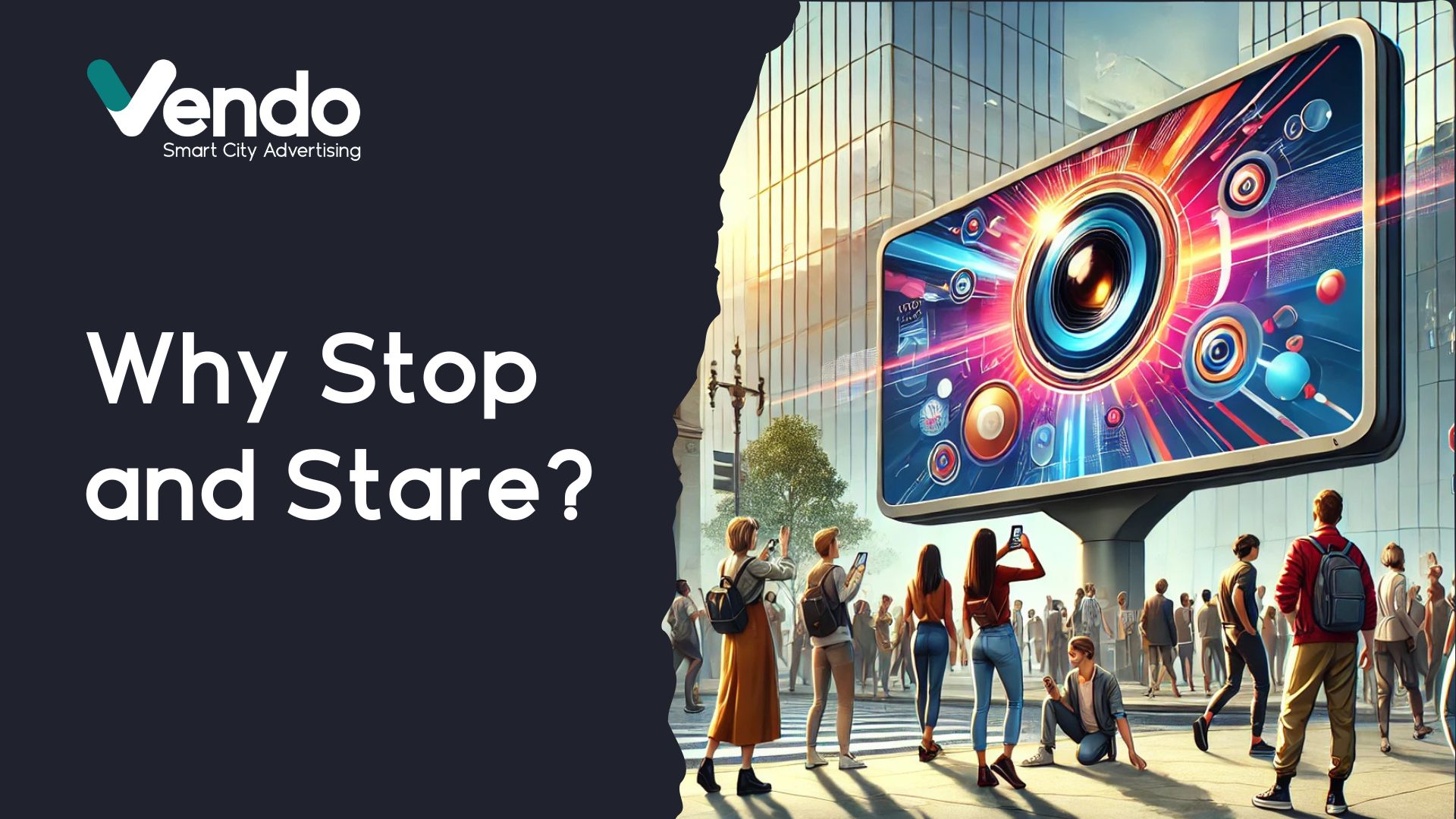
Ever noticed how some ads make you stop and look twice? Maybe it’s a bold image, the perfect spot where it feels like the ad was speaking just to you, or a line that tugs at your emotions. Those moments aren’t random—they’re the magic of well-crafted outdoor advertising, designed to stick with you long after you’ve passed by.
As the year winds down, it’s a great time to reflect on strategies that have shaped outdoor advertising success. One key factor often overlooked is the role of psychology in understanding consumer behavior. Knowing what drives people can significantly impact the effectiveness of billboard and LED screen campaigns.
The Power of Visual Simplicity
The claim that humans process images 60,000 times faster than text lacks strong evidence, but research confirms that visuals grab attention quickly and effectively communicate messages at a glance. This is why impactful imagery is vital in outdoor advertising. Think about Unilever’s Pepsodent black charcoal relaunch LED screen ad and billboards at major streets in Ghana. A brightly colored design with a concise message “Removes Stains, Whitens Teeth” paired with a picture of the product which catches attention immediately. The visual simplicity ensures that drivers or pedestrians absorb the message in seconds, aligning with their limited attention span.
Placement and Context Matter
Consumers respond better to ads that meet them in the right context. For instance, placing an ad for energy drinks near a gym or a billboard promoting car insurance on a highway can subconsciously connect with the consumer’s immediate needs. Our LED screens at the Total filling station on Liberation Road exemplify this principle. While commuters fuel their cars, a well-placed ad for a weekend getaway can nudge them into planning a trip.
Emotional Appeal
Outdoor ads that evoke emotions—whether joy, nostalgia, or excitement—tend to stick. For example, DSTV’s holiday-themed billboard showing a Christmas background and a lady beaming with smiles holding their product scene with the tagline “This Christmas is Givinggg” can resonate deeply during this festive season. This emotional connection often compels consumers to act, whether by visiting their store to make a purchase or engage with them online.
Repetition Equals Recall
Outdoor advertising remains impactful by reinforcing messages through repetition. A commuter who repeatedly sees the same ad builds familiarity with the brand, increasing the likelihood of conversion. For instance, displaying KIVO Gari ads featuring Kudus and the tagline ‘Champion Taste’ across major regions can encourage purchases through repeated exposure. The key here is to also ensure that your online strategy and placement is strong. If a customer can find all the necessary information quickly, this will lead to stronger brand recall and lead conversion.
Real-World Example: Liberation Road LED Screens
Our LED screens at prime locations like the Total station showcase how these psychological principles come to life. Ads for beverages, ride-hailing services, real estate and electronic appliances are strategically placed to appeal to the needs of commuters in transit. These ads are not just about visibility; they create relevance and drive action.
Conclusion
Outdoor advertising is not just about placing ads on billboards or screens. It’s about understanding the consumer journey, their behaviors, and what catches their attention in real-world settings. As we prepare for the next year, it’s worth reflecting on how well your outdoor campaigns have aligned with these principles to prepare for even greater success in the year ahead. Embracing these psychological insights will ensure that your outdoor campaigns connect, resonate, and deliver results.
What are your thoughts? Let’s collaborate to make your brand shine outdoors!